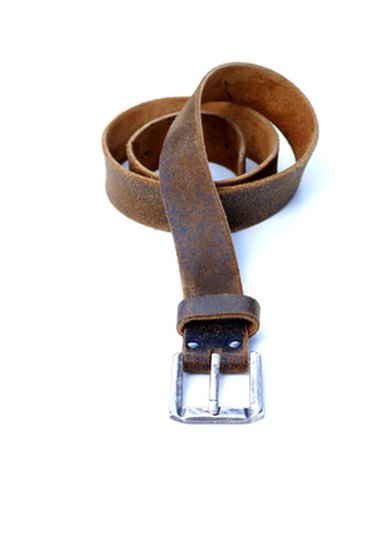Things You'll Need
Leather
Steel rule
Pencil
Rotary leather punch
12-inch-square piece of 1/2-inch plywood
Compass
Drive punch set
Mallet
Awl

Durable leather resists wear and punctures. This durability lends leather to a variety of uses including boots, horse saddles and belts. To form a hole in leather, use a punch tool rather than a drilling tool. Drilling a hole in leather causes the material to stretch and the hole will close to a fraction of the drill bit size after drilling. A punch on the other hand removes the material to create a hole with a minimal amount of stretching. Rotary hole punches create small-diameter holes and drive punches create holes larger than 3/16 inch in diameter.
Step 1
Place the leather on a stable work surface.
Video of the Day
Step 2
Align the zero end of a steel rule with one edge of the leather. Mark the center of the hole or holes on the leather with a pencil.
Step 3
Remove the steel rule from the surface of the leather.
Step 4
Lift the leather from the work surface. Spin the head of a rotary punch to the size hole required in the leather. Align the marked center of the hole with the top die of the rotary punch. Press the handles of the punch together to punch through the leather.
Step 5
Place the leather on top of the plywood square if you are punching a larger hole. Set a compass to the radius of the required hole size. Set the point of the compass on the marked center. Swing the compass to mark a circle on the surface of the leather.
Step 6
Select a drive punch from the drive punch set that matches the required hole size. Align the cutting end of the punch with the circled marked by the compass.
Step 7
Strike the back of the drive punch forcibly with a mallet two to three times to punch the hole in the leather.
Step 8
Slide the awl through the back of the drive punch. Push the awl toward the cutting edge of the punch to force the leather circle from the center of the punch.
Video of the Day